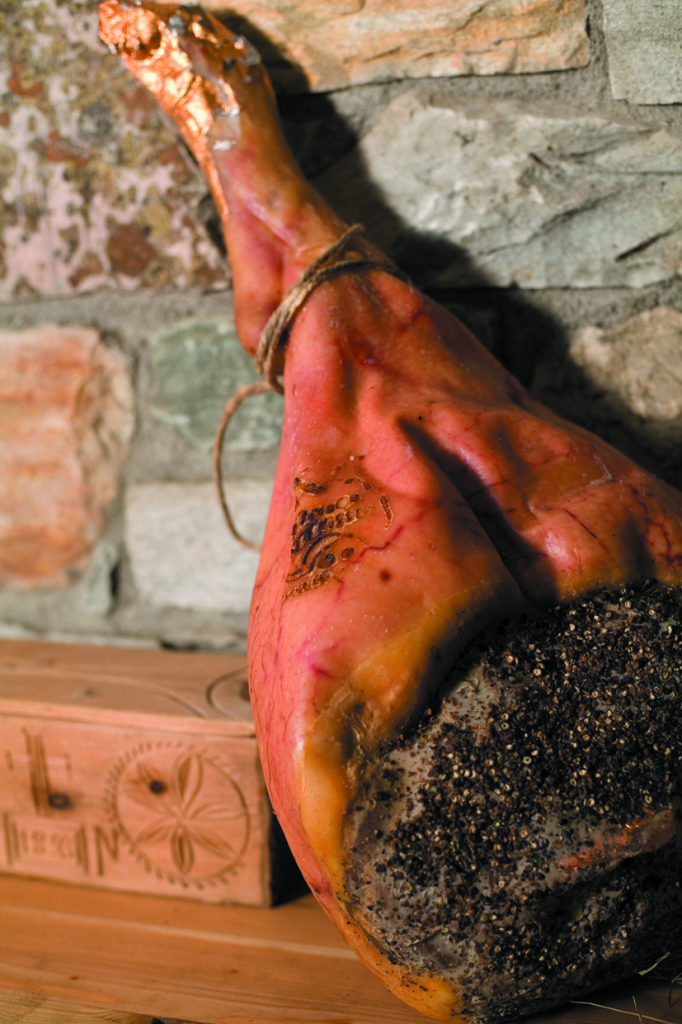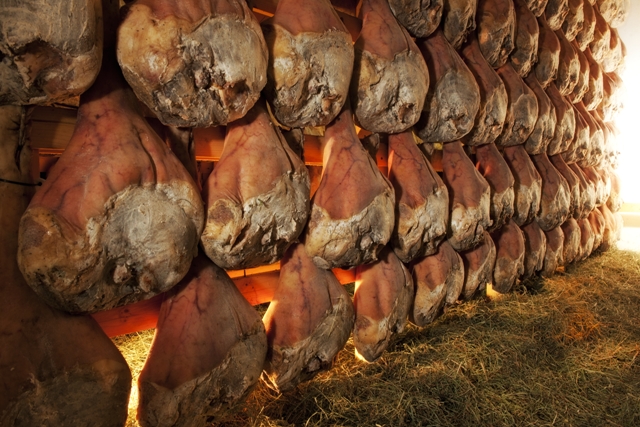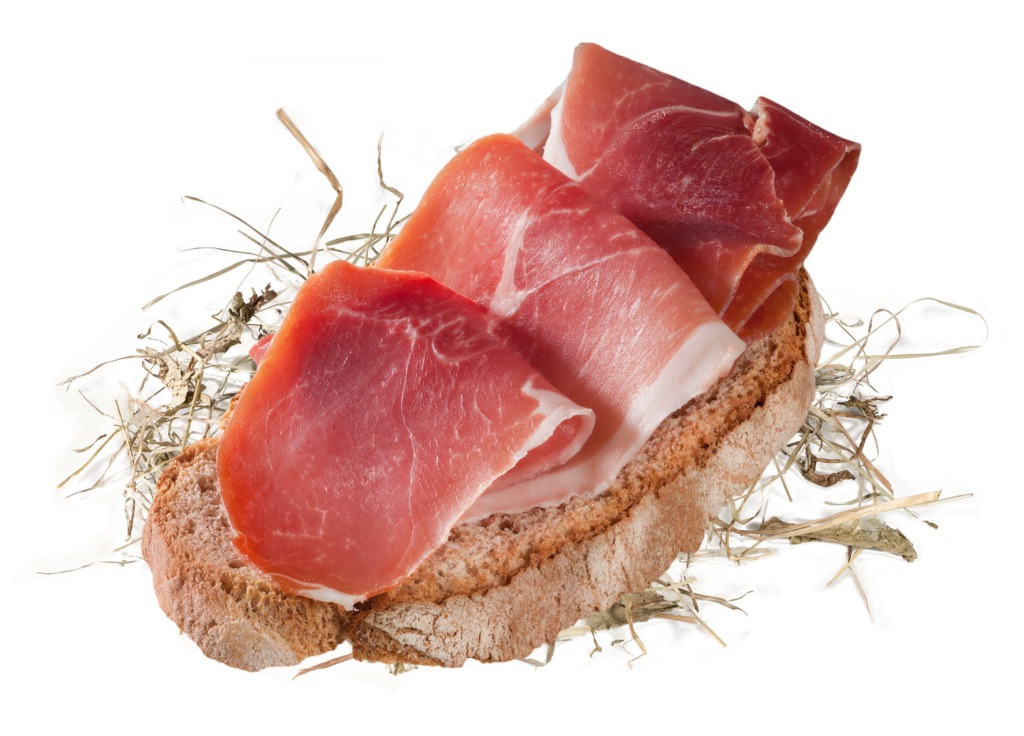 At the foot of the Great St. Bernard Pass, 1600 meters above sea level, there is Saint- Rhémy -en- Bosses, birthplace of the well known DOP Vallée d'Aoste Jambon de Bosses. In this land, this unique raw ham has been prepared since ancient times and its production is still carried out almost unchanged, thanks to the passion of the small community of Saint- Rhémy -en- Bosses.
At the foot of the Great St. Bernard Pass, 1600 meters above sea level, there is Saint- Rhémy -en- Bosses, birthplace of the well known DOP Vallée d'Aoste Jambon de Bosses. In this land, this unique raw ham has been prepared since ancient times and its production is still carried out almost unchanged, thanks to the passion of the small community of Saint- Rhémy -en- Bosses.
No additives and only mountain hay
No additives are used. Berries and mountain air are the secret that makes the difference. The seasoning lasts from 12 to 24 months in a cool place surrounded by hay, similar to the ‘rascard’, a typical wooden construction built near to rural houses.
 Saint - Rhémy - en - Bosses has only 200 inhabitants and it is the last village before Switzerland. It is characterized by a strong tourist destination, with cultural, environmental, and culinary treasures. Since the Middle Ages, the valley of the Great St. Bernard has been the centre of important trades. Augustinian monks built a church and a hospice for welcoming passersby and merchants in order to give them food, help, and accommodation. The people reward the monks for their work with donations of goods, including the Jambon. But even before that, from the records of inventory for sale or exchange the presence of legs of pork emerges: they were used as a high value element of exchange. Today, thanks to local producers’ attention, France, Belgium, Germany, Switzerland, and recently Chinese markets, too, have shown interest in this type of ham.
Saint - Rhémy - en - Bosses has only 200 inhabitants and it is the last village before Switzerland. It is characterized by a strong tourist destination, with cultural, environmental, and culinary treasures. Since the Middle Ages, the valley of the Great St. Bernard has been the centre of important trades. Augustinian monks built a church and a hospice for welcoming passersby and merchants in order to give them food, help, and accommodation. The people reward the monks for their work with donations of goods, including the Jambon. But even before that, from the records of inventory for sale or exchange the presence of legs of pork emerges: they were used as a high value element of exchange. Today, thanks to local producers’ attention, France, Belgium, Germany, Switzerland, and recently Chinese markets, too, have shown interest in this type of ham.
Only bread and a glass of wine
The Jambon de Bosses shows a straw- yellow colour, with smooth surface of the skin on the outside, slightly folded in the inner thigh. While cutting it, its muscle- mass results to be firm and compact, with fibrous texture, and wine- red colour. Its fat is shiny and hard, sometimes tinged with bright pink on the outside.
For a correct conservation of this ham after purchasing it, the temperatures must range between +4 ° C and +9 ° C.
Its fragrance is delicate, seasoned and aromatic, with a sweet and slightly salty taste and a touch of aromatic undertones, with gamy nuances.
In order to be sure that a ham is really a ‘DOP Vallée d'Aoste Jambon de Bosses’ one, its brand must be burned on the skin of the gammon and printed on its tie; the label which accompanies the ham records both manufacturer's code and ingredients. The weight of each gammon must exceed 7 kg.
The typical way of consuming this ham is with bread, especially rye one or, in general, wholemeal. A simple recipe, which enhances at its best the flavour of the ham. It can be tasted accompanied by such white, full-bodied and young white wines as the Blanc de Morgex et de La Salle, the Müller Thurgau of this valley, and in particular the Pinot Grigio, grown at high altitudes, characterized by a very intense aroma with hints of fruit which remind yellow peach and pear.
